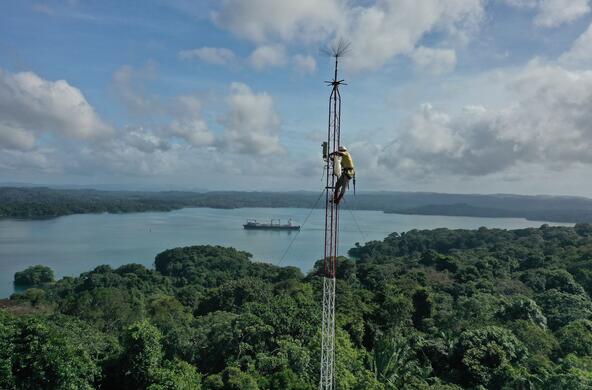Contrary to the alternative universe of our President, carbon dioxide continues to accumulate in Earth’s atmosphere, the planet is getting warmer, and both trends are destined to continue until we do something to curb CO2 emissions. Curbing emissions will require shifting from fossil fuels to renewable energy or perhaps capturing the CO2 emissions for long-term storage. For the latter, various schemes are possible, including storage of CO2 in the deep Earth.
The technology for Carbon Capture and Storage, or CCS, focuses on the storage of CO2 in rock layers deep in the Earth. It is best applied to large, stationary sources of CO2 such as power plants that burn coal or natural gas to generate electricity. The carbon dioxide that might normally be vented to the atmosphere is captured and pumped underground. Much attention has focused on the land area with geology favorable to CCS, but near-shore waters harbor marine sedimentary layers which would also work.
A couple of mechanisms are involved with CO2 storage in rocks. The easiest is simply to fill the pore space in geologic formations with the gases. If the CO2 is pumped to great depth, it is not likely to leak back to the surface. Unfortunately, the capacity of rock pores is relatively small, so this CCS mechanism is rather limited.
Another possibility is reaction of CO2 with the rocks themselves. When CO2 dissolves in water, it forms carbonic acid, which can react with rocks in the process known as chemical weathering. As an example, if CO2 weathers calcium silicate minerals, the calcium that is released can combine with CO2 to form calcium carbonate—a long-term form of carbon storage.
Another approach, known as the Allam cycle, can be employed using natural gas, which is burned in pure oxygen to produce only CO2 and water. The CO2 is used to drive turbines, and eventually it is pumped underground. The water can be delivered to the local environment, perhaps enhancing available supplies in arid regions.
There are costs and risks involved with CCS, especially in anticipating an increased occurrence of earthquakes as a result of the “lubrication” of joints and faults deep in the Earth. This has been seen when water is injected during hydraulic fracking operations to produce natural gas, and it is likely when any fluid enters rock formations at depth. Pumping CO2 into rock is not without its costs—often as much as 30 percent of the energy generated is used to dispose of the CO2. Reacting to the cost of CCS, the Southern Company has just abandoned efforts to institute CCS at its new power plant in Kemper County, Mississippi, where it was to be the first to demonstrate CCS technology on a coal-fired power plant.
The CO2 storage capacity of areas favorable for CCS in the United States amounts to 150 x 1015 g of CO2—equivalent to about 25 years of our emissions at current levels. An even larger capacity is found in marine sedimentary layers near to shore. We can’t depend on CCS forever, but it may well be an important way to reduce emissions to the atmosphere as we transition away from fossil fuels. Perhaps we can catch the President’s ear between tweets.
References
Celia, M.A. 2017. Geological storage of captured carbon dioxide as a large-scale carbon mitigation option. Water Resources Research 53: doi: 10.1002/2017wR020841
Eccles, J.K. and L. Pratson. 2012. Global CO2 storage potential of self-sealing marine sedimentary basins. Geophysical Research Letters 39: doi: 10.1029/2012GL053758
Service, R.F. 2017. Fossil power, guilt free. Science 356: 796-799.
White, J.A. and W. Foxall. 2016. Assessing induced seismicity risk at CO2 storage projects: Recent progress and remaining challenges. International Journal of Greenhouse Gas Control 49: 413-424.
Zenz House, K., C.F. Harvey, M.J. Aziz, and D.P. Schrag. 2009. The energy penalty of post-combustion CO2 capture and storage and its implications for retrofitting the U.S. installed base. Energy and Environmental Science 2009 (2): 193-205.







